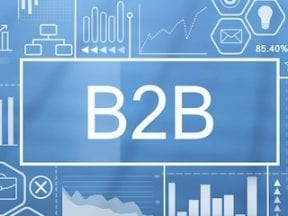B2B ecommerce was already growing rapidly when the global pandemic struck in early 2020, accelerating the wholesale industry’s digital transformation. And while it would be possible to list many industry shifts for the coming year, five trends could be especially disruptive.
All of these could produce important changes in how manufacturers, brands, distributors, retailers, and consumers interact in 2021 and beyond.
5 B2B Ecommerce Trends for 2021
1. Drop shipping. For many years, brands (which may or may not manufacture their own products) and distributors have been drop shipping orders on retailers’ behalf.
A customer ordering, for example, Ariat boots from any number of omnichannel retail stores might have his order shipped directly from an Ariat warehouse in California.
Similarly, when a shopper visits the Sur La Table website and purchases a small kitchen appliance, a distributor or manufacturer will likely fulfill the order, not the retailer.
This trend may have accelerated in 2020 for a few reasons.
First, the shutdowns in March, April, and beyond played havoc with ecommerce supply chains. In some cases, this forced wholesale businesses to invest in fulfillment infrastructure.
Second, ecommerce demand spiked, forcing some retailers that had previously done their own fulfillment to turn to suppliers.
Third, the shutdowns forced many retailers into bankruptcy, including J.C. Penney, Neiman Marcus, Lord & Taylor, GNC, and more. Many of these businesses kept selling online whilst in bankruptcy because of drop shipping. Their financial situation made it difficult to order truckloads of products, but, with drop shipping, they could continue.
In all cases, wholesalers and retailers changed their habits because of the pandemic, and those new habits are not likely to change soon. B2B ecommerce could grow thanks to the continued and accelerated growth of drop shipping.
2. Ecommerce integration. One of the keys to more drop shipping was an increase in ecommerce integration. Despite being shorthanded thanks to Covid-driven furloughs, many B2B companies developed integrations with their retail customers.
In most cases, these integrations took advantage of application programming interfaces that made it possible to connect platforms and data. This enabled brands and distributors to provide retailers with accurate inventory info, supply chain details, and other vital business data.
What’s more, ecommerce integrations made it possible to deliver that data and place orders in new channels, including on mobile devices either via native apps or progressive web apps.
B2B suppliers and retailers alike made significant investments in these ecommerce integrations, and the only way to generate a return is to keep using them.

For B2B wholesalers, ecommerce is becoming Main Street. Photo: Mark Konig.
3. Buyer experience. Increased B2B ecommerce integration is helping to fuel the trend toward better buyer experiences.
As Amazon pointed out, 73 percent of online business buyers are millennials. And 68 percent of those purchasing professionals would rather research products online (61 percent will use a mobile device) than speak with a salesperson.
The traditional B2B sales channels are not as popular as in the past.
In 2021, expect B2B suppliers to use consumer ecommerce technology and practices to attract new business customers and cater to a different sort of purchasing professional.
B2B ecommerce shopping experiences will rival B2C with better websites, sales channels, mobile apps, and an appropriate level of personalization, integration, and customization.
4. Payment options. With new channels, integrations, and buying experiences will come new payment options, including new forms of B2B financing.
In 2021, we can expect B2B companies to streamline their accounts receivable infrastructure. This could be as simple as moving away from manual processes such as physically mailing invoices and accommodating payments in new ways.
Whatever solutions emerge, we can expect these new payment options to address several problems within the current system, including digital transaction fees, payment delays, remittance data processing, and transaction visibility.
Thus digital payments for B2B transactions may come to resemble some of the retail options.
5. Consumer-like marketing. The most speculative of my five disruptive B2B ecommerce trends has to do with marketing. B2B suppliers will increasingly market like consumer-facing businesses. This is already the case for many consumer brands. Nike, Reebok, Levi’s, Carhartt, and others have always advertised their products directly to consumers.
But that is not the case for every B2B seller. It will likely change, however, in 2021.




